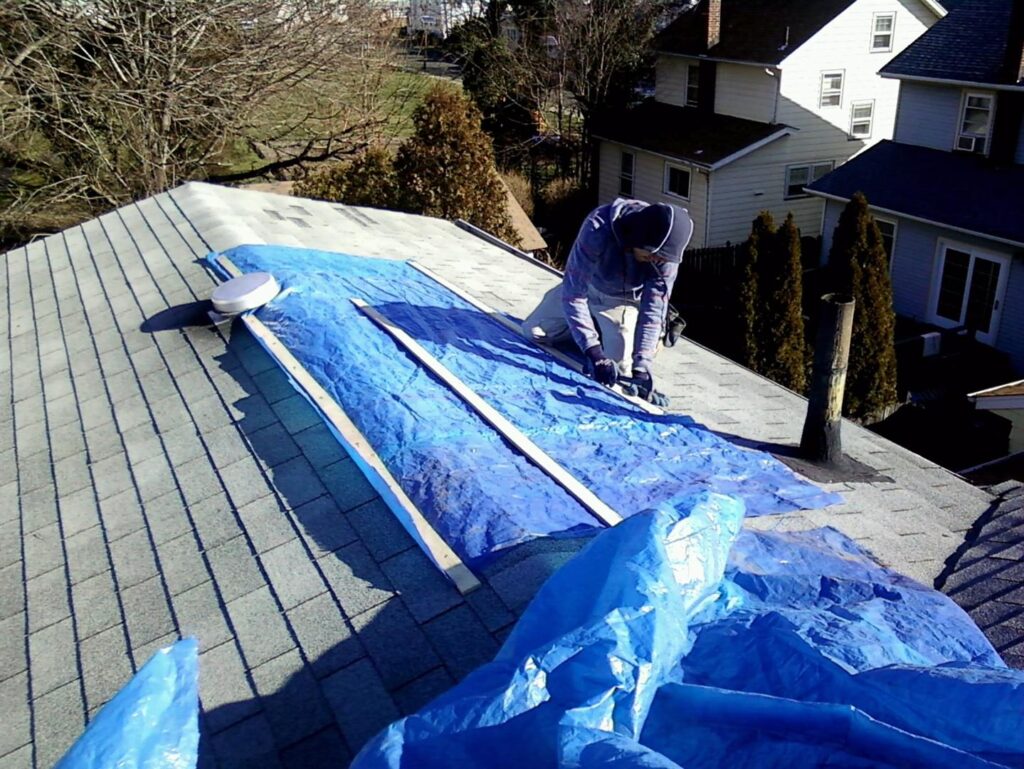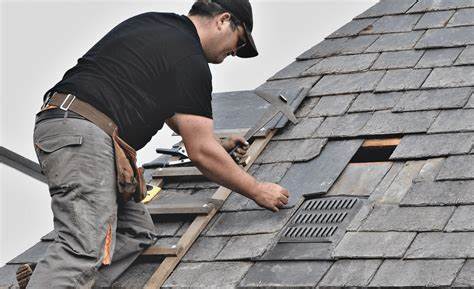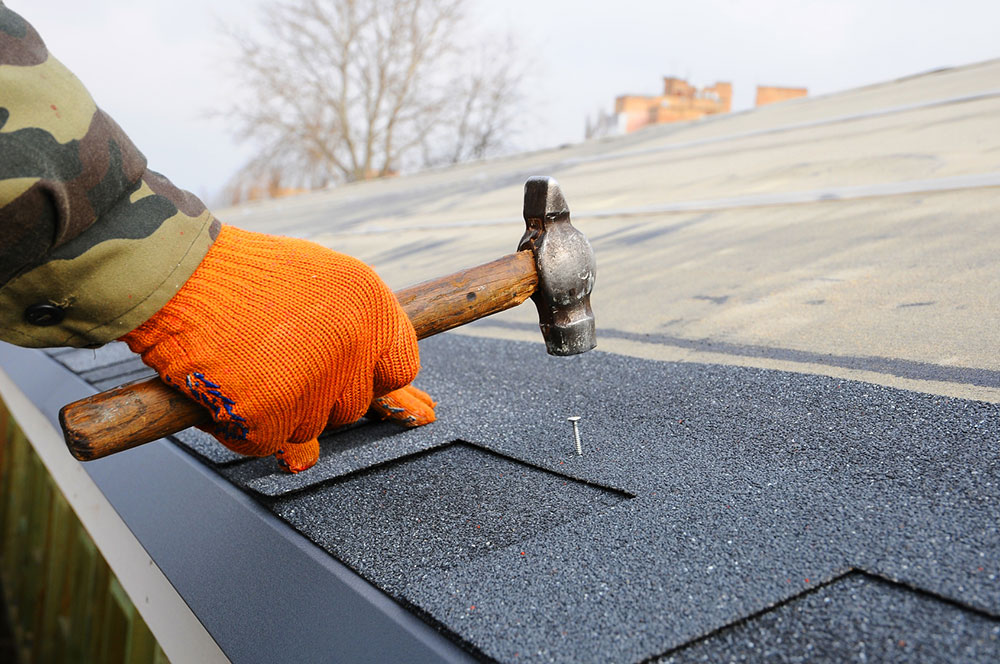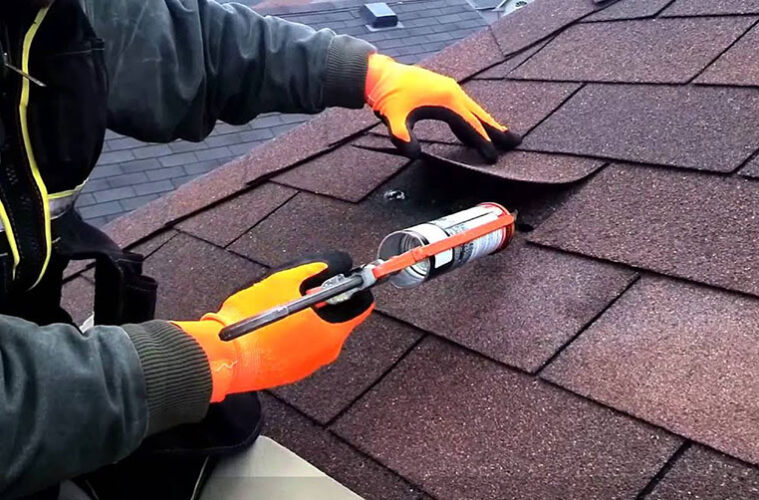Roofs take a beating, day in and day out, all year long. On days when the weather is less than ideal, your roof endures extreme heat, cold, wind, ice, snow, rain, and falling debris, any one of which can lead to a roof leak.
When your roof leaks, you can hire a roofing contractor to fix the leak, or you can tackle it yourself. Depending on when it happens, you may have no choice but to try and fix the leak until a pro can get out to see you.
If you are in that situation, while hiring a professional is optimal, you have options to fix the leak yourself if none is available, both short and long-term.
Here are a few of them.
Tarp the Roof

source: pinterest.com
The key is to tarp the leak effectively so that the leak stops and that portion of your roof is and remains weatherproofed. Even if the leak is small, tarping it if you can find the source is the best approach until after you have repaired it. A tarp is only an immediate and emergency fix, but it gives you time to formulate a plan for a long-term solution.
Ideally, a tarp is only on your roof for a few days, but if necessary, it can stay on your roof for as long as you need it to stay in place. If you must leave it on for longer, you will have to inspect the tarp frequently to ensure it remains weatherproof. At least you should inspect it after any inclement weather or windy days.
Repair or Replace Shingles

source: pinterest.com
Depending on the cause of the leak, you can use several materials to get relief, at least in the short term. You will still have to tarp the area and set up roofing equipment like jacks and platforms. Even if the leak is small, you are still working several feet off the ground, and falling is a risk, so you should make sure you have ample safety equipment.
If all you are doing is creating an emergency fix until you can get a roofing contractor in, you have multiple alternatives that can serve the role of a shingle:
- Tarp
- Sheet metal
- Wooden shingles
- Roofing cement (if the breach is small)
- Plywood planks
- Flashing
Whether you are planning to undertake a short or long-term fix, there are some materials you will need to purchase. For a short-term fix, roofing cement is a must. For longer-term fixes, you will need shingles and roofing nails. You might need felt paper, plywood (for underlayment) flashing, and sealant.
Roofing Cement or Sealant

source: pinterest.com
If the leak is small enough, using roofing cement or sealant might be an option to plug the leak for good. Leaks that could be addressed with cement or sealant will usually be along seams, pipes, vents, or skylights. Skylights, for example, are notorious for leaking, and finding the leak can be challenging. Usually, however, cement or sealant will do the job if you locate the source.
There are two aspects of using cement or sealant you must consider before applying the product. First, you must ensure that you have identified the leak, as it is easy to think you have found it only to find out the leak was larger than you realized or in a location other than where you thought it was.
The second thing you must remember is whether using cement or sealant for a short-term fix is not creating more work when you implement a longer-term solution. The area of your roof cemented or sealed will likely require removal for a longer-term fix unless you are extremely careful. Before sealing or cementing, consider whether a tarp is not a better option.
Hire a Roofing Contractor

source: pinterest.com
The most effective way to get your roof fixed, whether a slow drip or a gaping hole caused by a fallen tree, is to hire a professional. Yes, you or another skilled DIYer can do it yourself. It will also cost you a lot in tools, equipment, and materials purchases, and you do not have the years of experience a pro does if you run into something you have not anticipated.
In some cases, hiring a roofing contractor is not only recommended, but it is also the smartest action you can take. For example, a roofing professional will know how to address an ice dam without endangering themselves or others around the work area. A pro will also know where to get the best deals on quality materials.
Finally, the right roofing pro has no learning curve, which reduces costs and the potential for error.
Final Thoughts
Roof leak. That is a fact of home ownership. If your roof springs a leak, you can come up with a quick short-term fix or implement something longer-term if you are inclined. The key is to always put safety first and use one of the options on this list.



